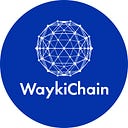WaykiChain’s Tri-Token Economic Model Empowering Decentralized Governance
As blockchain technology continues to evolve, the decentralized governance model of the Web3 era is gradually becoming a reality. In this process, the tri-token economic model (WICC, WGRT, WUSD) of WaykiChain will play a significant role, collectively empowering truly decentralized governance.
WaykiChain’s tri-token economic model is composed of WICC, WGRT, and WUSD, each token having its unique role and function.
WICC is the native token of WaykiChain. It serves as the basic currency within the platform, used to pay transaction fees and participate in platform governance. Users holding WICC can enjoy rights and participate in the decision-making process of the platform; WGRT is WaykiChain’s governance token. Users holding WGRT can participate in voting and governance decisions, propose governance proposals, and enjoy corresponding governance rights and interests; WUSD is WaykiChain’s stablecoin, its value pegged to the US dollar. With WUSD, users can conduct various transactions within the network without worrying about value fluctuations.
These three tokens work together to create a complete ecosystem.
In the Web3 era, decentralized governance is a new governance model that decentralizes power to every participant in the network. WaykiChain’s tri-token economic model provides robust support to achieve this goal.
As a governance token, WGRT empowers users to participate in network governance. This means that every holder of WGRT can influence the direction of network development, greatly enhancing the democracy of the network. Through this method, WaykiChain successfully realizes true decentralized governance. Going further, holders of WGRT can not only vote on existing rules and proposals but also propose new ones, making the network’s development more flexible and diverse. Moreover, by holding WGRT, users can also participate in the network’s profit distribution, giving network participants increased enthusiasm.
WICC, as the basic currency of WaykiChain, also plays a crucial role in decentralized governance. Users can obtain it through voting, subscription, or trading with other holders. Users holding WICC can also participate in the super node election, contributing to WaykiChain’s ecosystem construction through their abilities, including maintaining network stability, product development, domestic and overseas publicity, product promotion, and conversion. This not only ensures the security of the network but also motivates users to actively participate in network maintenance.
As WaykiChain’s stablecoin, WUSD’s value is pegged to the US dollar. This means that all transactions within the network can be settled with WUSD, significantly reducing users’ transaction risks. Furthermore, due to WUSD’s stable value, users can use it as a stable means of value storage, to some extent increasing the network’s appeal. In addition, WUSD can also serve as a transaction medium within the network, making transactions within the network more convenient. All these provide a necessary foundation for decentralized governance.
It is evident that the role of WaykiChain’s tri-token economic model in decentralized governance is not only reflected in the decentralization of power but also in how it encourages Web3 participants to actively participate in network construction and maintenance through incentive mechanisms and transaction convenience.
Therefore, it can be said that WaykiChain’s tri-token economic model provides a new possibility for decentralized governance in the Web3 era. Through this model, we can look forward to a more fair, transparent, and efficient digital world. In this world, every network participant can potentially influence the network’s development and benefit from the network’s growth. This is a world that truly belongs to everyone, which is the real meaning of decentralized governance.
